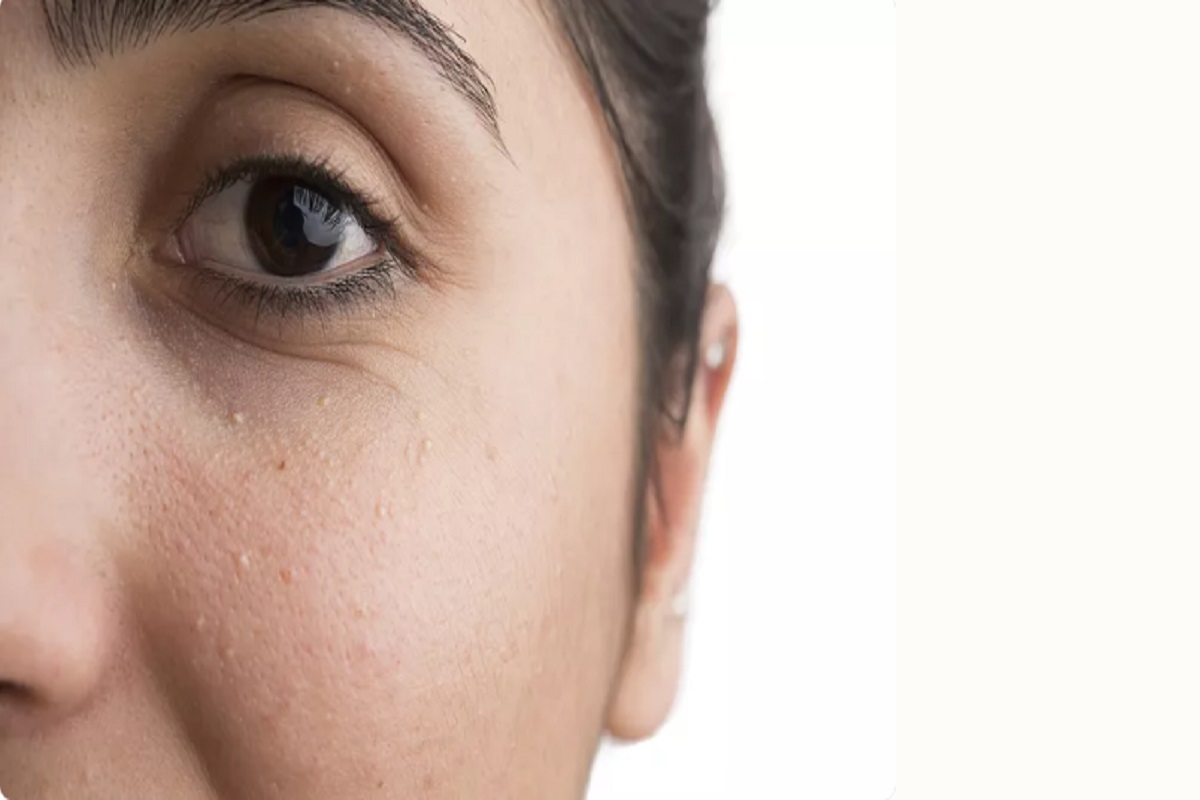
Milia
Milia: If you look in the mirror, a bunch of tiny hard white spots on your face, possible with a faint blue tint are visible. They don’t look or feel like a typical zit or white head, so what could they be? Those tiny hard white spots are called milia or tiny pockets of dead skin.
Experts On Milia
According to the director of laser and cosmetics at Tufts Medical Center in Boston and dermatologist, MD Farah Moustafa, said “Milia are made of keratin.”
Milia commonly develop on the cheeks, eyelids and the nose. As your skin naturally exfoliates old cells so that new ones can develop, the cells can get trapped, harder and become cystic-that’s milia.
“Think of them as pimples with nowhere to go,” says Joshua Zeichner, MD, a dermatologist and the director of Cosmetic and Clinical Research in Dermatology at Mount Sinai Hospital in New York City.
It sometimes called “milk spots”— are very common in infants; about 50% of babies have them at birth, according to the Cleveland Clinic. However, they can show up on anyone at any age.
Reasons
According to Dermatology Advisor, there are different types, including neonatal milia, the type that shows up on infants’ skin. The most common type in adults is primary milia; there are two other types that are less common, one that occurs in clusters on your skin and another that’s caused by trauma to the skin.
Besides the process of skin cells being trapped during the natural process of exfoliation, milia can also occur because of other factors.
“They may be due to sun damage or from heavy skin care products,” Dr. Zeichner says. Oil-based makeup or cleansers can be a culprit, if they clog your pores.
Skin damage from an injury or a rash, or prolonged use of corticosteroids, can also be a possible cause. Additionally, certain medical conditions can cause milia to form. “Milia can be a secondary symptom of a blistering skin condition, like a burn,” explains Dr. Moustafa. “They can also happen because of an autoimmune disease or genetic condition.” You can also get it if you don’t cleanse your skin regularly, and you may be more prone to develop them if you have rosacea or dandruff.
“Milia are completely harmless and are strictly a cosmetic issue,” says Dr. Zeichner.
Also Read: Hot Make-Up Trends: Raise your Hotness Quotient with these Top 5 Make-up Trends to Look Super Hot
How To Prevent Milia

Don’t pop them yourself
Dr Moustafa advises “never poke or prod milia.” “And avoid scrubbing milia with any kind of gritty exfoliant.”
Gentle Cleansing
“Gentle skin care,” says Dr. Moustafa. “Look for one with mild exfoliating properties, like glycolic or lactic acid.” Always use gentle cleanser and your fingertips, wash with lukewarm water, avoiding scrubbing and rinse with lukewarm water and pat dry with a soft towel.
Sunscreen Is Must
This is a golden rule even if you don’t have that, but sun damage can be a common contributor. Be sure to properly apply at least an SPF 30 sunscreen to your skin 30 minutes before heading outside.
To read more such news, download Bharat Express news apps


















